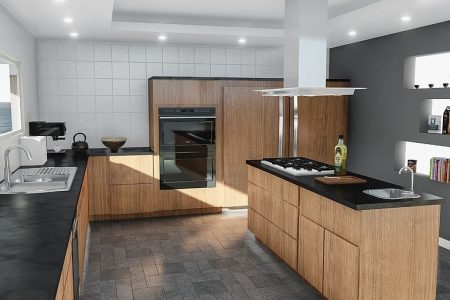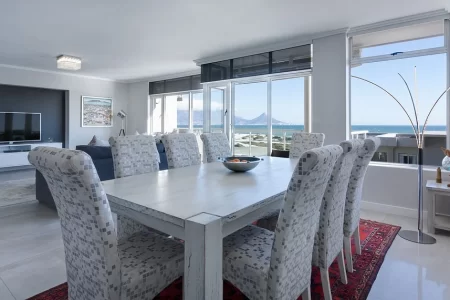Natural light makes us feel more vital and dynamic; for this reason, glass is increasingly used as an architectural and structural element. It is undeniable that large windows provide an aesthetic and qualitative plus to our home, but it is also true that this requires demanding care and maintenance. Regular cleaning and accessibility to all the glass are fundamental aspects. We present a series of considerations and recommendations that must be considered before opting for a house with glass walls.
Thanks to advances in techniques applied to glass and windows, nowadays, homes are open to the outside, light, and environment; they generate open spaces. The walls become transparent, making the exterior landscape and natural light the protagonists of the decoration. Gone are the opaque, dark houses, with thick walls and tiny windows that, although adequately protected against cold and heat, made the interior spaces closed and sad. The houses built with glass walls, allowing the entry of natural light in abundance, tend to create cheerful and optimistic spaces, highly appreciated among their inhabitants. But they also carry important considerations that we should not overlook.
If we choose to use large windows for our home, there are certain precautions that we must follow, such as the fundamental fact of choosing glass and materials of reliable and recognized quality. We must be well informed about the different types of glass on the market and their advantages and disadvantages; since this is a delicate material, it has a low thermal resistance and high conductivity. That means that it does not help to retain heat in winter. At the same time, it requires that we have to protect ourselves from it in summer as well, with the consequent energy and economic expenditure that this entails for heating and air conditioning.
Fortunately, this material has evolved a lot in this sense and currently, efficient solutions can be found that reduce these disadvantages. The use of one type of glass or another will largely depend on the climate of the place, the orientation, the function and the use we make of the space and the environment of the house. Let’s see below the different types of glass and windows that we can find in the market and their main characteristics so that it helps us choose the style that best suits us for each case.
Glass With Reinforced Thermal Insulation
It isolates from the cold and maintains the interior heat of the house. In this way, comfort is improved in winter while reducing heating costs. It has double glazing: two glasses separated from each other by an air chamber or argon gas. One of the glasses incorporates a low-emissivity layer, which is usually placed towards the inside of the air chamber. With this glass, the “cold wall” effect that forms near windows in winter is reduced, avoiding annoying condensation.
Solar Control Glass
It insulates from heat because it causes the sun’s rays to reflect outwards, preventing internal overheating. In this way, the temperature inside the house is maintained, reducing the cost of refrigeration. It has a treated layer, usually with noble metals, which partly protects from solar radiation. Depending on the orientation of the window and the maximum temperatures reached in summer, glazing with more or less solar control should be considered. That’s particularly necessary for large-area skylights exposed directly to natural light.
Safety Glass
They provide the tranquillity of having a safe and protected space at the same time as bright. There are mainly two types of safety glass: tempered glass and laminated glass. The tempering, in case of breakage, is fragmented into tiny pieces, thus avoiding cuts. The laminate incorporates one or more plastic films (polyvinyl butyral). It is safer against possible breakage since the pieces of glass remain glued to the plastic film, thus avoiding both cuts and falls under vacuum. Both types of glass are designed to withstand substantial impacts and pressures. We must bear in mind that construction regulations indicate areas of risk of impacts to which a solution must be given, such as the first 90 cm from the ground in fixed panels and the first 150 cm from the ground indoors.
Acoustic Insulation Glass
It comprises two sheets of glass joined by a plastic sheet (PVB) specially designed to reinforce acoustic insulation. They isolate better from outside noise compared to ordinary glass. With these glasses, we improve the interior comfort of the house, achieving a calmer and more serene environment.
Self-Cleaning Glass
It is composed of a colourless glass to which a transparent layer of a photocatalytic and hydrophilic mineral material has been incorporated, which performs, together with the sun and rain, a self-cleaning function: the dirt that is deposited on the glass is decomposed by the rays UV from the sun as the rain removes decayed dirt from the glass. If it does not rain for days and we decide to clean the glass manually, we will see that the dirt is easier to remove. This property is handy for glass that is difficult to access, such as skylights, canopies and railings—a convenient way always to have perfect crystals.
Are you convinced by the use of glass walls in houses? For all your glass and glazing needs in Melbourne, get in touch with V & J Glass and Aluminium experts. Glass, glazing works, mirrors, glass shopfronts, shower screens and more have no secret for these specialists as they know how to repair, maintain and install them effectively.




